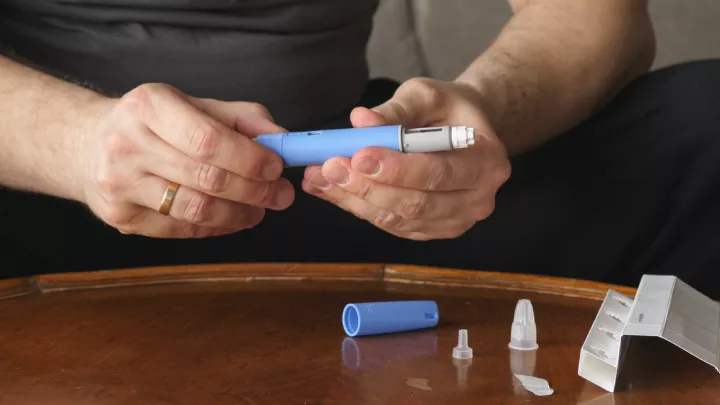What to do when your child swallows a foreign object

If you‘ve ever spent time around infants or toddlers, you know where everything goes as soon as they get their hands on it – in their mouths.
“Swallowing foreign objects is quite common in children between the ages of 6 months to 3 years old,” says Jenna Wong, DO, Nebraska Medicine family medicine practitioner. “The best strategy for preventing a child from swallowing nonedible objects is to keep small items away from them and always monitor them closely.”
But we all know even with the closest supervision, toddlers can find things to put in their mouths.
Commonly swallowed items
Some of the most commonly swallowed items include:
- Buttons
- Batteries
- Coins
- Small toys
- Magnets
- Bones
- Marbles
“Most of the time, small nonfood objects will pass through the digestive system without causing any health issues or symptoms,” explains Dr. Wong. “If you suspect your child may have swallowed something, even if they are not having symptoms, you should always contact your child’s doctor. Even the most seemingly benign objects can cause harm.”
Certain items are more dangerous and could cause more serious harm to your child. If any of these items are swallowed, contact your doctor immediately or go to the nearest emergency room or Immediate Care Clinic.
Dangerous items if swallowed
Some of the more dangerous items swallowed include:
- Strong magnets
- Items containing lead, such as air rifle pellets or sinkers for fishing lines
- Highly absorbent items like water beads
- Batteries, especially small disc batteries
- Sharp objects
- Medications or pills
Depending on the object and its location, your doctor may want to monitor your child for a period of time before any intervention is necessary. Unfortunately, not every object, such as glass, is visible on an X-ray. If it cannot be seen on an X-ray, but your child has pain or other symptoms, your doctor may order additional imaging, such as a CT or MRI.
Sometimes, an object may become stuck or is too dangerous to leave in place and should be removed. “If an object gets stuck, it could block the gastrointestinal tract, which could be dangerous,” notes Dr. Wong. “In other cases, such as with batteries, the object can damage the tissue of the GI tract itself.”
Your doctor can use a variety of ways to remove an object depending on where it is and what it is. “Using different tools, sometimes your doctor may be able to pull the object out or push it further along the GI tract so it can pass through the stool,” explains Dr. Wong.
If your child is choking, have someone close by call 911 and then begin performing the appropriate procedure to dislodge the item. This procedure varies depending on the age of your child.
Signs of choking
- Violent coughing
- A high-pitched sound when breathing in
- Being unable to cough, breathe, cry or speak
- Face turns pale and blue-tinted
- Clutching at their throat
“I recommend every parent attend a basic life support class for children so they are prepared to provide basic life support in case of an emergency before first responders arrive,” says Dr. Wong.
Emergent symptoms
If your child experiences any of the following symptoms after swallowing something, contact your child’s doctor or go to the closest Immediate Care Clinic or emergency room immediately.
- Trouble breathing
- Trouble swallowing (increased drool is a sign of this)
- Noisy breathing
- Neck, chest or abdominal pain
- Fever
- Bloody vomiting or bloody stool
“Don’t be afraid to call for help or advice,” says Dr. Wong. “No matter what type of object your child swallows, always err on the side of caution and contact your doctor.”
For a doctor’s appointment, On-Demand Video Visit, or to find the closest emergency room or Immediate Care Clinic, visit NebraskaMed.com/Care.







